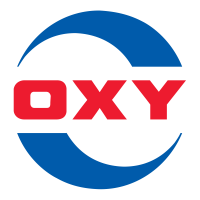Mack-Cali Realty Corp
F:WY4

| US |

|
Fubotv Inc
NYSE:FUBO
|
Media
|
| US |

|
Bank of America Corp
NYSE:BAC
|
Banking
|
| US |

|
Palantir Technologies Inc
NYSE:PLTR
|
Technology
|
| US |
C
|
C3.ai Inc
NYSE:AI
|
Technology
|
| US |

|
Uber Technologies Inc
NYSE:UBER
|
Road & Rail
|
| CN |

|
NIO Inc
NYSE:NIO
|
Automobiles
|
| US |

|
Fluor Corp
NYSE:FLR
|
Construction
|
| US |

|
Jacobs Engineering Group Inc
NYSE:J
|
Professional Services
|
| US |

|
TopBuild Corp
NYSE:BLD
|
Consumer products
|
| US |

|
Abbott Laboratories
NYSE:ABT
|
Health Care
|
| US |

|
Chevron Corp
NYSE:CVX
|
Energy
|
| US |

|
Occidental Petroleum Corp
NYSE:OXY
|
Energy
|
| US |

|
Matrix Service Co
NASDAQ:MTRX
|
Construction
|
| US |

|
Automatic Data Processing Inc
NASDAQ:ADP
|
Technology
|
| US |

|
Qualcomm Inc
NASDAQ:QCOM
|
Semiconductors
|
| US |

|
Ambarella Inc
NASDAQ:AMBA
|
Semiconductors
|
Utilize notes to systematically review your investment decisions. By reflecting on past outcomes, you can discern effective strategies and identify those that underperformed. This continuous feedback loop enables you to adapt and refine your approach, optimizing for future success.
Each note serves as a learning point, offering insights into your decision-making processes. Over time, you'll accumulate a personalized database of knowledge, enhancing your ability to make informed decisions quickly and effectively.
With a comprehensive record of your investment history at your fingertips, you can compare current opportunities against past experiences. This not only bolsters your confidence but also ensures that each decision is grounded in a well-documented rationale.
Do you really want to delete this note?
This action cannot be undone.

| 52 Week Range |
12.2
17.6
|
| Price Target |
|
We'll email you a reminder when the closing price reaches EUR.
Choose the stock you wish to monitor with a price alert.

|
Fubotv Inc
NYSE:FUBO
|
US |

|
Bank of America Corp
NYSE:BAC
|
US |

|
Palantir Technologies Inc
NYSE:PLTR
|
US |
|
C
|
C3.ai Inc
NYSE:AI
|
US |

|
Uber Technologies Inc
NYSE:UBER
|
US |

|
NIO Inc
NYSE:NIO
|
CN |

|
Fluor Corp
NYSE:FLR
|
US |

|
Jacobs Engineering Group Inc
NYSE:J
|
US |

|
TopBuild Corp
NYSE:BLD
|
US |

|
Abbott Laboratories
NYSE:ABT
|
US |

|
Chevron Corp
NYSE:CVX
|
US |

|
Occidental Petroleum Corp
NYSE:OXY
|
US |

|
Matrix Service Co
NASDAQ:MTRX
|
US |

|
Automatic Data Processing Inc
NASDAQ:ADP
|
US |

|
Qualcomm Inc
NASDAQ:QCOM
|
US |

|
Ambarella Inc
NASDAQ:AMBA
|
US |
This alert will be permanently deleted.






 You don't have any saved screeners yet
You don't have any saved screeners yet

Good day, everyone, and welcome to the Mack-Cali Realty Corporation Third Quarter 2020 Earnings Conference Call. Today's conference is being recorded. At this time, I would like to turn the call over to Ashley Cotton. Please go ahead.
Thank you, operator. I'd like to remind everyone that certain information discussed on this call may constitute forward-looking statements within the meaning of the federal securities law. Although we believe the estimates reflected in these statements are based on reasonable assumptions, we cannot give assurances that the anticipated results will be achieved. We refer you to the company's press release, annual and quarterly reports filed with the SEC for risk factors that impact the company.
With that, please allow me to introduce MaryAnne Gilmartin, Mack-Cali Board Chair and Interim Chief Executive Officer.
Good morning, all. Thanks for joining us today. We hope you're all safe and healthy. Today marks my 100th day on the job. I've had the pleasure of getting to know the team and the properties, and my short time looking under the hood has reinforced my belief that Mack-Cali has great assets and great people. I want to thank all of our associates for their dedication, commitment and humanity throughout these difficult months. A special shout out to the folks who have tended to our properties and our occupants each and every day since the start of the pandemic. You are our front-line workers, and we appreciate all you do. The Board is on track to announce a permanent CEO in the first quarter of 2021. The Board's search process has not stopped us from moving forward aggressively with strategies to unlock shareholder value. The recently reconstituted Board of Directors and current leadership are fully aligned in this pursuit. Though we cannot control the macro environment real estate operators across the country are facing due to the global pandemic, we are laser-focused on 3 key initiatives: number one, noncore asset sales. As Ricardo Cardoso, our Chief Investment Officer, will share today, we are making impressive progress executing our noncore asset sales. Since the end of 2019 at the conclusion of the prior Board strategic review, Mack-Cali embarked upon a program to exit its non waterfront commercial assets. We are now in varying stages of negotiations on all remaining suburban office assets. These sales will continue to be executed at or close to our pre-COVID NAV for these assets, with the proceeds being used to repay corporate debt and bring down our leverage.
Initiative number two, Waterfront commercial asset focus. In terms of leasing for the quarter, we renewed 154,000 square feet of space, predominantly in the suburbs as we had very little space rolling on the Waterfront. We realized increases in our core portfolio of 12.3% on a cash basis and 22.3% on a GAAP basis, and we committed to $5.94 per square foot per year of lease term. We are hard at work at repositioning the Harborside campus, sharpening our leasing message and bolstering our talent to drive results. The opportunity at Harborside is aligned with what users are looking for in a post-COVID work environment. A campus that brings a unique level of control in an uncertain time, easily accessible throughout the region with multiple transportation modes, essential retail right here on-campus, many attractive residential options within walking distance and the ability to spread out a workforce in a user-controlled setting. To bring the campus' value proposition to light, we have aligned ourselves with top regional performers at CBRE, led by Mary Ann Tighe and Mark Ravesloot. And we are moving quickly to reposition our assets and strategically target new tenants.
Since our last quarter, we also onboarded a significant leasing talent, Ed Guiltinan, who has joined us today for this call. He is our new Head of Leasing and was formally with the Rockefeller Group, where he was the firm's Head of Leasing in New York, executing millions of square feet of deals during his tenure. Ed is hiring COO for Mack-Cali. Worth noting, Ed worked here from 1997 to the year 2000, and we're happy to have his talents back at the company.
A moment now on our repositioning thesis for the Waterfront. Even before COVID-19, there was growing demand for business districts outside of Manhattan. We expect that trend to accelerate now. Post-COVID, people increasingly want to live near where they work. They want access to open space during the workday and they want manageable density that's convenient without feeling overcrowded. Places that have those elements without compromising on commuting convenience are going to be successful. There is no place that brings all of that together better than Jersey City. Because Mack-Cali controls the entire Harborside campus, we can provide a consistent level of first class service, amenities, convenience and security as well as a sense of community across all of our buildings, which is unique to an integrated campus environment. We're aggressively targeting New York City users, including tech companies that have been looking for large blocks of contiguous space in an integrated ecosystem. We're encouraged by the Westside migration of many tenants in Manhattan and believe that story continues across the Hudson River to Jersey City.
By doubling our focus, rebranding our leasing message, modernizing our Waterfront assets and diversifying our product offerings, we have a plan. Coming soon will be targeted marketing to large single user tenants from Manhattan, meeting sizable contiguous spaces, a robust prebuilt program for small to medium-sized users who favor plug-and-play arrangements and exploring a life sciences offering right here at Harborside to take advantage of Jersey's dominance in this space, and the lack of viable waterfront options for this growing sector. These moves will be strategic, impactful and timely value drivers for our business. Our third initiative is our strategy to optimize Roseland. We believe in the long-term value proposition offered by Roseland, and our team is diligently working to improve the portfolio's performance, including current occupancy.
The short-term disruptive impact of the pandemic has not diminished the value of this portfolio or our platform. In fact, it's quite clear that there's strong demand for both our multifamily assets and our vertically-integrated Roseland platform with its development capabilities. This is true, despite the challenges faced in the near-term by all residential operators across the region, including us.
In the last 100-plus days, we have honed in our approach, brought together the A team to aggressively implement a well conceived, creative and thoughtful strategy to drive value. This is a challenging time for our industry, and there is no clear sense of when we will all feel safe and secure again. But our work is clear: one, continue to sell our suburban assets at or close to NAV by marketing into the story of the suburban renaissance; two, be strategic, proactive and aggressive on repositioning our commercial waterfront assets; and three, optimize the performance of Roseland by focusing on tenant retention, driving new traffic to our properties and maintaining operational excellence. These efforts will position us to take advantage of all potential alternatives for both the company and specific business when the time is right and as the market evolves.
I will now turn the call over to our CFO, Dave Smetana, who will walk us through the third quarter results. Dave?
Thank you, MaryAnne. We reported core FFO per share for the quarter of $0.30 versus $0.38 per share in the prior year period, with the year-over-year reduction due mainly to asset sales and pandemic-related disruption to our hotel and parking operations. The office portfolio continues to benefit from low portfolio turnover and favorable comparisons on free rent periods, and produced a plus 2.1% GAAP same-store NOI increase in the quarter and a 15.2% cash increase for same-store NOI in the quarter.
As Marshall will go into in more detail, the multifamily portfolio is experiencing the same occupancy pressures that our peers are experiencing in the New York City Metropolitan area. As a reminder, we calculate same-store data on a GAAP basis in our multifamily portfolio, which generally results in straight-line rent treatment for concessions.
Credit charges in the quarter include a $590,000 charge related to reserve allowances and a $444,000 charge related to additional straight-line rent receivable reserves. Rent collections in the quarter averaged 96.9% in our office portfolio, and were 99.5% in our multifamily portfolio. For October, thus far, we have collected 96.5% of office rents and 99.5% on the multifamily side. Our hotel operations remain limited to the residents in portion of our dual-flag Port Imperial hotel property, which contributed a $1.3 million EBITDA loss in the quarter. Our historic losses at this asset in a range of $1 million to $1.3 million are a decent benchmark for the fourth quarter.
We do not have any current plans to reopen the EnVue in Port Imperial in the Hyatt and Jersey City in the near future. On parking, it came in better sequentially this quarter at $4 million, driven by a slightly better transient revenue result in a $500,000 collection from a disputed parking contract.
Other income included approximately $2 million of lease term and restoration fees in the quarter, which we don't expect to repeat in the fourth quarter. We had a number of onetime items in our G&A line item this quarter. They included a $6.9 million line item for proxy fight costs and $8.9 million of severance relating to senior executive departures as well as a reduction in force. The net G&A savings benefit, including recent hires, should fall in a range of $4 million to $4.5 million a year. Looking ahead to the rest of this year on the office leasing front, we have just under 24,000 square feet expiring on the Waterfront in the fourth quarter of 2020. Approximately 19,000 square feet of this is an amount that has been renewed by our current tenant in an expansion at our 101 Hudson property.
Our suburban office portfolio posted a strong third quarter as well. In our core suburban portfolio, we executed over 107,000 square feet of transactions with rental increases of 11.8% on a cash basis and 23.7% on a GAAP basis. For the remainder of the year, we have over 32,000 square feet expiring in our suburban portfolios, all of which pertain to assets that are slated for disposition.
I will touch briefly now on our updated NAV disclosure. Last night, we updated our NAV disclosure in our supplement on Pages 7 and 8, which now follow a components of NAV methodology. The change seems appropriate now, now that the Roseland portfolio has matured from a collection of subordinated JV interest with land and development to an operating portfolio with a development capability, making it much easier to value. Additionally, the majority of our suburban office portfolio has now either been sold or is under contract at prices consistent with our last published values in our second quarter NAV table. We believe that providing this new disclosure in 1 place and allowing the user to apply his or her own cap rates and discount rates to arrive at NAV is in line with blue-chip REIT practice.
Turning to the balance sheet. In the quarter, we reduced our line balance to $156 million outstanding, with the proceeds from $213 million of asset sales that we executed in the quarter. In September, we exercised the first of 2 6-month extension options on our line of credit, effectively extending our maturity date out to July of 2021. Our priority use of capital continues to be corporate debt repayment. The net debt-to-EBITDA metric was 12.1x at quarter end. The metric remains elevated as we continue to carry all the multifamily development debt with no EBITDA benefit. Additionally, the metric continues to be negatively affected and increased by 1.2 turns from negative hotel and parking impacts.
Lastly, we announced in September that we have suspended our third and fourth quarter dividends to preserve liquidity, as we have already met our taxable income distribution requirements for the year.
With that, I will now turn it over to Ricardo Cardoso, our Chief Investment Officer.
Thank you, Dave, and good morning. We continue to execute on our disposition program despite the initial slowdown and delay in transaction activity caused by the pandemic. Office sales in the state of New Jersey remains on track with year-to-date sales totaling approximately $2 billion compared to calendar year 2019 of $2.1 billion and a historical 5-year average of $2.3 billion. Investment demand for suburban office in New Jersey remains healthy and has largely been dominated by private buyers. Being one of the more active sellers in the New Jersey market for several years, we have a very good understanding of the market dynamics resulting in an efficient disposition process.
I would like to further discuss the company's NAV value disclosure beyond David's comments. The company's net asset value estimates at June 30, 2020, continue to be a fair barometer of the company's view on NAV for the suburban office assets as we crystallize the value via sales. The extent to which COVID-19 impacts our net asset value will depend on developments going forward, many of which are highly uncertain and cannot be predicted. Despite the magnitude of such uncertainties under today's climate, pricing for assets currently in negotiations remain closely in line with our previously published NAV estimates.
Turning to our results. This quarter, we sold 12 of the 15 buildings within the Parsippany and Giralda portfolio for $187 million, comprised of 1.75 million square feet. This represents the largest transaction in the suburban tri-state market since the beginning of COVID. In addition, we closed on the sale of 325 Columbia Turnpike, 175,000 square-foot building in Florham Park, New Jersey for 25.6 million. In total, we executed $213 million in office sales during the third quarter. In the fourth quarter, we also sold 5 Vaughn Drive, a nearly 100,000 square foot office building within the Princeton submarket for $7.5 million, bringing our year-to-date total to approximately $258 million.
As of today, we have 9 suburban assets under contract totaling $395 million comprised of [ 1.85 billion ] square feet. We anticipate closing 3 of these 9 properties prior to year-end, generating approximately $100 million in unencumbered asset sales. As MaryAnne mentioned, since new leadership was announced, we have moved quickly and today, we are in negotiations for all the remaining suburban assets. We remain optimistic on the execution of our disposition strategy, assuming that financial markets do not take a drastic turn given the rise of COVID concerns.
With that, I would like to turn the call over to Marshall.
Thanks, Ricardo. Roseland's portfolio finished the third quarter at 91.7% leased as compared to 92.6% last quarter. The reduction was primarily a function of a continued decline in leasing traffic due to COVID-19, primarily in our urban locations. The occupancy and leasing traffic decline is consistent with other Northeast-focused portfolios, a substantial portion of which are our comps. Notwithstanding the occupancy decline, as Dave mentioned, collection rates remained robust in the third quarter, 99.5%. To combat the traffic decline and stay competitive in our submarkets, we place an even greater focus on existing resident retention, enhanced our marketing campaigns and implemented more competitive pricing, which has rolled down our net income. Revised pricing includes expanded leasing concessions and adjusted base rents to generate higher capture rates in our markets. These collective efforts have led to an increase in capture rate and traffic statistics in July through September, a trend that has continued into October.
In the quarter, our same-store portfolio, excluding 2 assets under active renovation, experienced an 11.7% decrease in NOI generated by a 3.3% loss in revenues and a 10.3% increase in expenses. The expense load was abnormally high, primarily due to COVID-related staffing and supplies, material increase in insurance rates and an increase in turn costs related to greater turnover in the third quarter. On a year-to-date basis, the same portfolio experienced a negative NOI of [ 3/10 of a percent ] generated from a 1.5% increase in revenues and a 4.6% increase in expenses.
With respect to our hotels in Port Imperial, the EnVue remained closed in the third quarter, though we opened its 6 floor dining operation. In the third quarter, we averaged $550,000 in monthly revenue at this COVID comfortable outdoor setting. The Residence Inn continued to operate and finished the quarter with average occupancy at 63%. The Emery, our lease-up in Malden, Massachusetts, is currently 84% leased and is forecasted to stabilize by year-end. This 326 unit project commenced leasing activities in early 2020 has achieved the highest rents in its submarket. The asset is forecasted to reach a stabilized yield of 6.3% and projected NOI of $6.1 million.
The company's remaining 4 construction projects representing 1,616 units are projected to achieve development yield above 6% on stabilized NOI of $55 million. Moreover, we have now fully funded our equity obligations for these projects. We are actively preparing the initial deliveries and lease-up strategies for 3 of the 4 development projects delivering in the first quarter 2021, including 673 units in 2 Port Imperial communities and The Upton at Short Hills, 193 unit luxury community in 1 of our New Jersey's premier municipalities adjacent to the Short Hills Mall.
Our fourth project, the 750 unit Charlotte in Jersey City is scheduled for delivery in the first quarter of 2022. This signature project is a beneficiary of a below-market pilot fixed for 20 years at 7%. From a financing perspective, we are scheduled to close our $165 million Monaco takeout facility next week and are targeting a takeout of our Emery construction loan in December.
Finally, though we have no immediate plans for new construction starts, we have 2 priority shovel-ready projects. The Park Parcel of Port Imperial, a 298 unit mid-rise development to be constructed overlooking a 17 acre City Park with unencumbered views of Manhattan and Harborside 8, a 679 unit highly-amenitized tower, which will be adjacent to our corporate headquarters next door to Harborside 3.
I'll now turn the call back to MaryAnne.
Thank you, Marshall. I will close by emphasizing that the value we continue to build with our multifamily platform is considerable. We're pursuing opportunities within our portfolio to unlock incremental value via leasing, repositioning and ensuring that our projects are at the cutting-edge with respect to amenities and offering the most sought-after features in a luxury rental home. As we move ahead, we believe these assets will continue to shine and are positioned to outperform over time.
With that, we will now open the call for questions. Operator?
[Operator Instructions] We can now take our first question from Manny Korchman from Citi.
MaryAnne, thanks for your comments on sort of your first 100 days in the CEO search for replacement. Just wondering now that you've been there 100 days, do you have any more interest in putting yourself permanently in that CEO seat?
Manny, I'm super focused on the job I'm doing as the interim. And as you know, I'm not on the Search Committee at the Board. So it is entirely a Board matter, and I'm here day-to-day doing the interim job, and that's where I want to be.
And I have a question for Ricardo. As you're out there talking to these parties that are looking at the suburban New Jersey assets, have you had any conversations with them about selling the Waterfront assets? Or at least having conversations about the Waterfront assets?
So thanks for the question. As of right now, our focus is selling the suburban assets. That's our strategy that's been set forth by the Board. It's not to say we wouldn't consider selling the Waterfront. But at the -- when we do decide to do that, if we decide to do that, we'll create a process around that.
Manny, I'm not optimistic that today we would achieve what we could on the Waterfront if we spend time focusing on a strategy of leasing it up with more proactive, aggressive approach to leasing with our new team, a focus on execution and being much more commercial and honing our branding message to focus on a campus-wide strategy. So I think it's going to take time for it to come into its own with the new team here, but I'm optimistic that ultimately we get there. I'm not so optimistic that we could transact today on those assets at a number that's respectable or anywhere near what it's worth.
And I think you mentioned that the new team is targeting large users looking for large spaces. That kind of seems like real estate leasing 101, how is that different than what the old team was doing? Or what other tools have you given them try to go out and find tenants or land tenants?
So I want to make sure you heard that I said large users needing contiguous space at a great value proposition, but I also spoke about an offering of prebuilts and possibly to the life sciences space. So I think what I'm trying to touch on is with 1 million square feet of space available to discuss, we should be offering a range of alternatives to address the needs of tenants, both here in Jersey and across the river. And to be very frank, I think the approach needs to be much more proactive, much more commercial than it was previously and a deeper focus on execution. And again, having been here, I think what's extraordinary to me is that what the team here needed was a bit of tooling and tweaking upgrade of talent in certain areas and then greater alignment, accountability and empowerment. This is a highly capable team, but they need to be unleashed. And that's what's really changed, I believe, in the last 100 days.
We can now take our next question from Steve Sakwa from Evercore.
I guess, MayAnne, I wanted to just follow on Manny's question and maybe get Ed's perspective on trying to lure New York City tenants over kind of to the Jersey Waterfront. I know that's been a strategy for a long, long time, going back several CEOs. And I'm just curious, Ed, from your perspective, I know the rents are cheaper, but Downtown Manhattan's also got cheaper rents, and that's been an alternative. So just trying to understand sort of what the hook is to get tenants to come across the river?
Steve, it's MaryAnne. I'm going to start just by pointing out the fact that success is not just where you want to get, but how you plan to get there. And I think the plan is what's important. With that, I'm super proud to have Ed as part of the team. I'm going to turn it over to Ed.
Thanks, MaryAnne. There's a couple of things that -- firstly, my background over the last 20 years has been in Midtown Manhattan. I have many, I think, very valuable relationships with both tenants and with brokers that I think can help us attract tenants to come to Jersey City. Also, it's not just the rent. I think we have a very unique space in a campus environment that offers a lot to tenants that many of whom don't have the ability to take advantage of right now Midtown Manhattan. So I think the workplace, the users are evolving, and we can provide a lot of opportunity to those users.
Okay. I guess maybe switching gears, I guess going to Ricardo. I'm just curious on the buyers that you're talking to for the remaining suburban assets. What are some of the kind of big issues today? Is it price? Is it financing? Is it getting comfortable with sort of the lease up? I'm just sort of curious how deep, a, the buyer pool is? And what some of the sticking points are as you're negotiating kind of these final sales?
Sure. With the portfolios that we have out in the market, we've actually received a great amount of interest from the private investors on these assets that we have for sale. Keep in mind that the large pools of assets we have remaining are probably some of the better -- or are the better quality assets that we own. They're well located. So they are receiving a great deal of interest. So there is demand on the equity side to invest in the suburban markets. I would say that some of the challenges, of course, are getting through and making sure you have the right mix of tenants, which we do, that have the ability to get through the economy and get through the pandemic, and I think our portfolio is set up for that. The other challenge -- the biggest challenge in getting these deals over the hump into the finish line is really on the financing side. The markets in the early second quarter -- the financial markets sort of froze up on us. They are now back open and lenders are being selective in who they want to lend to and which assets they want to lend on. But given the assets that we have available and that are remaining to be sold, we feel optimistic we can get to the finish line and exit the suburban markets.
We think we can do that through 2021. I'm very confident of the team.
And without putting too fine a point on it, MaryAnne, is there sort of an expectation on sort of when the sales may get completed? Do you think that's a first half of '21? Or do you think it maybe drags beyond the first half of '21.
I'm going to manage the expectation and just say that I think through the year, through 2021, we think we can execute on all of it. Again, there's activity on every piece of the suburban portfolio. So with that, just given time to manage external factors, the pandemic and the just general difficulty of getting to a closing, I think it's safest to say you should assume throughout 2021.
Okay. And then just last question maybe for Marshall. You talked about the, I guess, the 4 construction projects, and you still expect a 6% yield or greater, I guess, on those. Does that sort of take into account the softness that you're seeing in the market today? Or is that more on a stabilized sort of post pandemic and more of a return to kind of normal environment? Or is that kind of pricing and the declines you talked about?
Well, it's interesting. Each asset has got a little bit of a different story. We're seeing -- we're holding rate and return in overlook and the asset releasing of now The Emery. We expect the Short Hills building to open and sustain its face rent and its return as well. I mean, I think the biggest challenge will be Port Imperial is on the Waterfront. It's an urban location closer to Manhattan, and we're seeing the softest market there -- here in Jersey City. So I think what our strategy is going to be on the lease-up is going to be utilization of free rent, more so than face rent. We're hoping to -- when we have -- our budget has a lot of room in it under interest reserves for the free rent on the lease-up. So if we can sustain face rent, just have a slower lease-up than that yield on a stabilized basis will be very close to our projected number. That's going to be the strategy on the lease-up.
We can now take our next question from Daniel Feldman (sic) [ Jamie Feldman ] from Bank of America.
I think it's Jamie Feldman. I guess just sticking with the suburban asset sales. You commented that pricing is not too far off from pre COVID. Can you just talk about the moving pieces to that? Is it lower rates that are offsetting lower NOI outlooks? Or actually, with more demand for suburban space, maybe NOI hasn't really come off too much. If you could just kind of talk us through what's changed and what hasn't?
So from a value perspective, the cap rate, there hasn't been a cap rate compression or a widening on cap rates. So they've remained the same. I think a lot of the private buyers are buying into. And I believe there's some truth behind it. It's early to say, but there is, as Mary Anne mentioned earlier, a renaissance in the suburban office market that's creating the demand. And we're able to, with that demand, create a bidding process that gets us to the right valuation at this time. So I think given the assets that we have currently in play in negotiation, we have a very good sense of value and where we think we can ultimately execute and close. So we feel good about completing the execution at close to the NAV numbers we previously published back in June.
I also want to say that if we can't, we won't. So we're determined to transact at or around NAV. That's the plan. But again, we have optimistic -- an optimistic sense that we can do that.
What's your -- what's the gap? I mean like how wide of a range are you talking about to be close to NAV? Is it 10%, 15%?
Sorry. In the few cases where we have had pricing discussions that are different from our initial contracted numbers, we've been maintaining pricing within 5%.
At 5%. Okay. And then I guess just sticking with the suburbs. On the space demand side and you use the term, Renaissance. Can you just talk about what you are seeing in terms of whether it's new tenants to the market, which submarkets? What are they looking for? How do you think the next year or so plays out?
I'll start just by saying there's a story unfolding a narrative, if you will, about the flocking of commercial users to the suburbs. We're not sure if that's going to hold or if it's even happening, but it certainly has created activity and interest in the work that Ricardo is leading up. And Ricardo, why don't you speak a little bit about the nature of the tenancies and the interest?
Sure. So we are receiving a lot of calls from brokers, at least inquiring about what our availabilities are. They're taking note of our inventory. There are tenants that are talking about possibly coming out into the suburbs. And that is part of the story that we're selling into. But as far as actual activity, we've had a handful of tenants that have executed on subleases on sort of plug-and-play space. But as far as a true flock to the suburbs, we're not seeing it yet, but I think that's part of the driver for investors to want to be aggressive in buying in the suburbs to try to hopefully capture part of that Renaissance when people start going back to work. I think right now, if tenants don't need to make decisions, they're not making decisions. They're kicking that can for the time being.
Okay. That's helpful. And then you had talked about one of the potential demand drivers at the Harborside being life science. Can you talk about the cost to do that? And what type of upgrades the buildings might need? And the demand pipeline for that type of space?
Sure. I'll start. There's 1 building in particular, 4A, that has experienced some turnover with TD Ameritrade and with Texas. And those turnovers led us to take a fresh look at the building. And at the same time, explore what has been, by any measure, the strongest sector of leasing across the Metro area, and that's life sciences. And when you look at the life sciences play, you recognize that in New Jersey, there's an ever-present grouping of life science tenants. They can't always get very close to the coast. And at the same time, there is a very significant capital requirements, which you point out. And those requirements are both in the core and shell and in the nature of the installations you build for these tenants. So we have taken a full-blown study of the CapEx necessary to transform that building. And we are also going to go out and have conversations with prospective partners in the life science space that would team up with us on that particular asset. They bring not only the capital, but they bring a list of tenants within which there's latent demand for more of this space. And so we're early in the process, but we've done a fair amount of leg work to look at the cost because with the life sciences building, you must build it and then they will come. And so we know we need to invest the money and not just talk to talk. And so we're looking at all the CapEx. We understand, in a very conceptual way, what the cost is. And now we're going to go talk to the dominant players in the marketplace. And you'll hear more from us over the coming months about that strategy.
Okay. So how long do you think it would take to even build out that space?
First, you have to design it. So I think if we forthwith jumped all over this idea, I think you're talking about a 4 to 6-month process to get the plans in a position where you're hitting the market with the right offerings and then probably another 4 to 6 months to put the core and shell enhancements in. But at the same time, you'd be marketing it. So I think this is a parallel path approach where you could be out marketing to tenants and having conversations. So as long as you can demonstrate that the capital and the know-how is in place.
Okay. That's helpful. And then last question for me. Can you just remind us that the water -- or just the Waterfront expiration schedule through the end of next year? And whether no move-outs or even move-ins that we're expecting?
Jamie, it's Dave Smetana. So next year, we have approximately 375,000 square feet rolling at the Waterfront. The majority of that 208,000 square feet is at Plaza 4A, which MaryAnne was talking about. So TD Ameritrade is going to move out in stages. Their last piece, about 1/3 of this space will move out at the end of September next year. And then the other big piece that is known as a move out today is 75,000 square feet for Natixis at Plaza 5. And then the rest we're in discussions on retention. But that would be roughly 280,000 of the 375,000 square feet rolling next year at the Waterfront.
[Operator Instructions] We can now take our next question from Jamie Feldman from Bank of America.
All right. I assume there's no one else in the queue, so I can ask a couple more here. The last question I was going to ask, Dave, while I had you was when you think about the suburban asset sales, can you just talk us through your thoughts on kind of the glide path for leverage, if you do get those done, say, by the end of next year, what you think your leverage starts to look like?
Thanks, Jamie. I'll take that. So as Ricardo has telegraphed and we've talked about, really, the suburban asset sales are the main source of proceeds to repay our corporate debt. We have our credit line outstanding with $156 million at quarter end, and we have 2 bond issues. Our [ April 22 ] is at $300 million, and our [ May 23 ] is at $275 million. So if you take the proceeds from all the suburban office sales after repayment of a mortgage at Short Hills, you roughly have enough to retire all of that debt. So on the glide path, what we've done, firstly in September, we extended out our current credit line from a January 21 maturity date until July. What we are doing now is we're going to work closely with our banks to really redo our line into a secured credit line. It will be secured by the unencumbered assets here at the Waterfront. So what we hope to do is as the suburban asset sales come in, repay the corporate debt on the deleveraging, and I assume you guys always focus on the net debt-to-EBITDA metric, we will continue until Marshall's pipeline. We have $1 billion in the ground of residential at a 6.1% yield, that's $61 million at 100%. We have 1 joint venture there. We get $54 million of NOI. That will start to be activated or fully activated at the end of '22. So that should be able to stabilize our net debt-to-EBITDA metric in the low double digits, 11 to 12. And then the last piece to really take it under 10 is the lease-up of the Waterfront. So just liquidity, first; stabilization of the multifamily portfolio, second. And then really taking those metrics down below 10 is dependent on the Waterfront lease-up. But we think those are the right priorities, but also do want to manage expectations that the net debt-to-EBITDA metric will remain elevated over the next couple of years.
Okay. And then finally, do you see yourself in '21 having to reinstate the dividend just based on expected earnings?
Jamie, it's MaryAnne. Well, that will be a Board decision, obviously, and we're going to relook at it as we roll into 2021, but there is no decision as of yet. We are going to focus -- continue to focus on liquidity, obviously, in our balance sheet.
We can now take the next question from Daniel Ismail from Green Street.
Can you provide us a frame of reference? So I realize things are tough with the pandemic. But if I'm a Midtown office tenant, what's your sense of how wide of a net am I casting and looking at new space in terms of different markets and different quality type?
Daniel, MaryAnne here. I would say that what we ought to be doing and are doing is casting a wide net across the isle of Manhattan, looking at tenants that have rollovers over the next few years. And also, we want to look at their employees and their talent. Unlike 20 years ago, the talent has a place at the table for relocation decisions. And so we want to see where employees live because to the extent that they're West, we think we have a competitive edge, not just in the value proposition, but in pleasing the talent base and keeping employees happy. And so we have called a list, and it's the sizable list of prospects across the river for companies that have rolling leases and have employees that come West -- from the West. And that's an obvious statement, but it's really quite important because the pounding of the pavement, working those prospects, it's really, really important work. And with CBRE, if you think about the way the team was constructed previously, it was 2 different brokerage teams, and it was the preponderance of the talent was out of New Jersey. We need a brokerage team that is completely aligned with management and that is made up of high performers from both sides of the river. So today, we have the best of the best, both in New Jersey and coming from Manhattan because we believe a large share of our prospects will be coming from across the river. Ed, I don't know if you want to add something?
Yes. I'd also add, MaryAnne, that several years ago, the market kind of changed. It used to be that a Midtown Manhattan tenant would look in Midtown Manhattan. Over the last several years, tenants have expanded their geographic region for consideration of relocation. Many tenants from Midtown moved Downtown or to Midtown South. And I think New Jersey clearly is in the mix now. I think any tenant looking for a sizable chunk of space or block of space will clearly consider Jersey City in addition to Midtown and Downtown and Midtown South.
I also point out the West side story, which is the great story of related leasing up of Hudson Yards. And if you think about it, what it didn't have on its side is proximity access to transit. And when you think about the Jersey assets that have here at Harborside, not only can we offer the same campus feeling in a controlled environment, but we have unparalleled access to the site, whether it's walking, driving, public transportation or ferry.
That's helpful. And then as a follow-up, can you provide an update on the Grow New Jersey program? And does there need to be any action on that front to see meaningful improvements in terms of Waterfront leasing?
Daniel, that's a great question. So today, the spread between the leasing in the top buildings in Manhattan and Jersey City is wide enough for us to be competitive. But I've spoken to the governor and the governor's team more than once since coming onboard. And I would say that I have a high level of optimism that there is a deal to be made there. And I think that they're hard at work, working out some of the differences between the legislature and the governor's office. And it's our hope that as we roll into 2021, the recognition on the part of the state that this is really important for the vitality of the commercial enterprises here in Jersey City that we will see the program come back again. And the reason why that's important is, I would say it's not essential today. But to the extent that the shadow sublease space grows in Manhattan and rents start to dip, we have to be ever more competitive. And those incentives will allow us to stay ahead of what is likely to be a reduction in rents across the board in Manhattan.
So presumably more of a '21 events than anything...
I don't -- yes. I mean, these things are, as you know, complex because once they reach agreement, it has to be drafted. And so while it is probably evocative of programs of the past, there is a process there, and I imagine that, that process, even if it's underway right now, and we're not aware of the full extent of it, will take a while to be adopted and tenants need certainty, and they need to be able to analyze the program. And the governor's office has been very, very interested in hearing from us about exactly what matters when you talk about incentives, and I've spent a large part of my career working on incentive programs that benefit end users. And so we've been able to contribute to the discussion. And I believe that there's something coming. I just think that it's a complex matter in the drafting of it and getting it fully approved.
Great. And then last 1 for me. Can you talk about the Hoboken office asset that fell out of contract? And exact reasons as to why that sale fell out? And any plans for the long-term ownership of that asset?
Sure. Thanks. When we entered into a contract on 111 River, we entered into it obviously pre COVID. And that asset -- we were able to attract -- get a very strong pricing for that asset. That asset does have a little bit over 100,000 square feet of available space. With COVID, there remained interest in our buyer to move forward, but at a reduced purchase price, which we were not willing to execute on. With MaryAnne's plan on the Waterfront, which obviously does include 111 River, we feel confident that we can create value on 111. And at some point down the line, possibly reconsider the possibility of selling the asset.
This is an example of not transacting for the sake of transacting. I mean, it's a great building. And if it can achieve NAV or close to it, there's no reason to dispose off it.
Are you able to share what the level of price reduction they are looking to get?
I would prefer not.
We'll now take our next question from Manny Korchman from Citi.
Just 1 quick follow-up for Marshall. Have you seen any additional stress in the smaller units, the micro units that you guys have at RV, given the fact that people are working from home or and kind of have a need or a long -- or at least a desire for space?
Manny, no, we've not -- we've talked to RV people a couple of times, and there's not been much of a shift in demand. I mean most people -- when they have extra space, they use it, but for the most part, they're on their iPads and whether in the apartment or downstairs. We haven't seen an increased turnover in small units.
Manny, it's MaryAnne. I'd also -- Manny -- I'd also say, Manny, that having toured all the assets, including the ones in the Boston area, what you do see is just a flurry of activity in all the common areas. So people who have apartments want to come out of the apartments. And so as you look at like what might be a feature of the future is the way the common areas in the amenity spaces are working is that they tend to be chockful of people who are conducting business out of their homes. And so I saw a lot of that as I toured the assets, and it's obviously completely understandable.
And so are you making any design changes in either the projects you have underway or the ones that you have planned to allow for more of that common space or different common space?
Yes. We've been heading that way for the last few years anyway. We've increased the square footage of our common space, and we've increased the co-work area. And we've also changed our strategy in co-work area. And actually, the pandemic is proving that to be correct. I mean we used to do large conference rooms in co-work space. And now we've divided into small work rooms where 1 or 2 people can isolate and be comfortable working in privacy. So we've morphed pre co with how we design public space, and we've also increased that public space anyway, just as a lifestyle effort. So if anything, the pandemic has shown us that direction has been the right thing. And so we're continuing that path.
That concludes today's Q&A. I would now like to turn the call back to MaryAnne and Ashley, please go ahead.
Thank you all for listening today. Stay safe, and we'll see you next quarter.
Thank you. That concludes today's conference. Thank you for your participation, ladies and gentlemen. You may now disconnect.